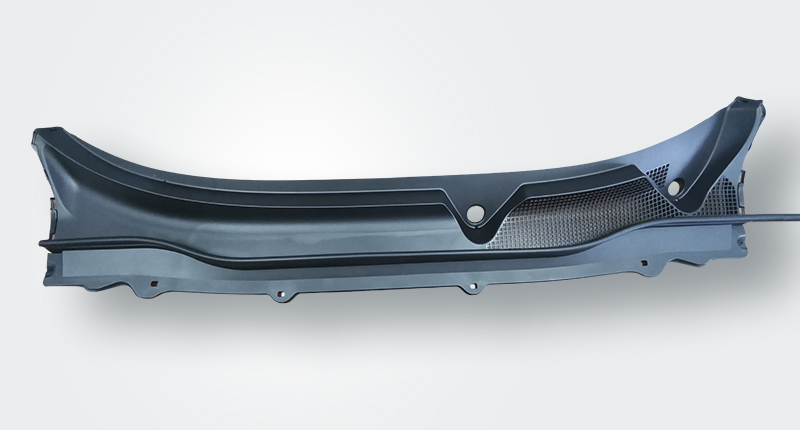Group collaboration
Teamwork is the source of Moriroku's competitive edge
Using original new materials to dependably supply high-quality auto parts is an extremely complex and difficult task. Moriroku Chemicals and Moriroku Technology worked together with two subsidiaries in China to take on this challenge over the past decade. Their successful efforts led to the creation of important synergistic effects and new competitive advantages for the Moriroku Group.
Overcoming the challenges of supplying original materials and auto parts
For automakers, it is essential to secure a reliable supply of consistently high-quality parts that do not break down for many years after a vehicle is put on the market. To ensure such quality, parts need to be tested many times. Therefore, automakers do not readily change suppliers due to the risks and troubles involved unless a supplier can offer significant advantages. Instead, automakers generally give priority to suppliers that have established a proven track record. This sets very high hurdles for suppliers entering the auto parts industry.
Under such circumstances, the Moriroku Group launched a project in 2011 to supply interior and exterior parts for Everus brand sedans that Honda Motor Company was developing for the Chinese market. Moriroku had already built up relations of trust with suppliers and business partners in China, particularly through its subsidiaries, Guangzhou Moriroku Technology, Co., Ltd., and Moriroku (Guangzhou) Trading Co., Ltd., established in 2001 and 2003, respectively. Working together with these subsidiaries, Moriroku Chemicals was to procure resin materials and Moriroku Technology would use them to develop the parts. By maximizing the advantages of this network, the companies aimed to overcome the challenges involved in supplying the parts to Honda's subsidiary in China, Guangqi Honda Automobile Co., Ltd.
These challenges were very difficult to overcome. Specifically, the four companies had to develop new resin materials to reduce the costs of the parts. These materials had to meet the same quality standards as the previously used materials in order to be certified by Honda, and. be supplied very dependably.
-

Group companies collaborate to develop parts for Honda: Working together, Moriroku Chemicals and Moriroku (Guangzhou) Trading procured and tested materials while Moriroku Technology and Guangzhou Moriroku Technology developed and tested prototypes until the auto parts met Honda's expectations.
Testing materials and parts repeatedly to meet high standards
The parts to be supplied to Guangqi Honda included windshield cowls (panels that cover the gap between the windshield and hood) as well as several interior fixtures. The first step was to procure low-cost materials with properties that could meet Honda's standards for certification. It was not enough to use materials with the same properties as previously used materials because the new parts had to be more cost competitive. Moriroku Chemicals and Moriroku (Guangzhou) Trading initially selected and procured the most suitable materials, and repeatedly measured their properties, first using computer simulations and then processing the materials into pellets for experiments. The experiments showed, for example, that hard materials could actually become brittle. After many attempts, the experimenters produced raw material compounds that met the requirements.
The next step was to produce parts with the materials and assess their performance. Guangzhou Moriroku Technology molded the materials into full-scale parts and tested them. The tests uncovered several problems, however, that did not arise in experiments on the pellets. Specifically, the parts became slightly deformed under temperature conditions of -30 and above 80 degrees Celsius, and they did not fit precisely with parts made by other companies. Everyone had no choice but to start over again and again, which was very frustrating. Nevertheless, members from the four companies worked together as a single team and continued to repeat the process until the parts met the necessary standards. As a result, these originally developed Moriroku parts were finally approved by Honda, and continue to be installed in thousands of Honda vehicles up to the present day.
-

A windshield cowl panel made for a Honda vehicle: Windshield cowl panels are exterior parts that cover the gap between a vehicle's windshield and hood. The panel shown in the photo was jointly produced by the Moriroku Group for installation in Honda vehicles.
Synergistic effects open up new possibilities for the Moriroku Group
The Moriroku Group's project to develop and supply parts for Honda vehicles in China was a major success. Moriroku Chemicals and Moriroku (Guangzhou) Trading demonstrated their collective ability to develop original synthetic resins for auto parts, while Moriroku Technology and Guangzhou Moriroku Technology jointly developed parts that met Honda's certification standards. By using the original materials, they not only reduced the costs of the parts but also their thickness and weight. Working together, the four companies successfully handled every stage of the process, from procurement and testing of materials through to product development and supply. This was the project's greatest synergistic effect.
Building on this momentum, members of the each company have been striving to add more value to Moriroku products and develop original materials that competitors cannot match.
-

A Honda Odyssey made for the Chinese market: Windshield cowl panels produced by the Moriroku Group are being installed in car models made for the Chinese market. The Group is leveraging its broad global network to supply products tailored to market needs in various countries.









